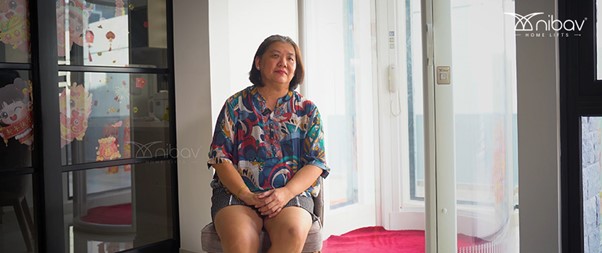Maximizing Small Office Spaces
In today’s dynamic work environment, small office spaces are becoming increasingly common. Whether you’re setting up a home office, launching a startup, or optimizing a compact corporate workspace, the challenge lies in making the most of limited square footage without compromising on productivity or comfort. This blog explores effective strategies and design tips to maximize small office spaces, creating environments that foster efficiency and enhance well-being.
1. Embrace Minimalist Design
The cornerstone of maximizing a small office space is adopting a minimalist design approach. Simplifying your office layout and decor not only creates a clean, uncluttered look but also maximizes available space. Here are key principles to follow:
-
Declutter Regularly: Keep only essential items on your desk and in your office. Regularly declutter to avoid accumulating unnecessary items that can quickly consume valuable space.
-
Multi-functional Furniture: Invest in furniture that serves multiple purposes, such as desks with built-in storage, foldable tables, or wall-mounted shelves. This approach reduces the need for additional storage units and optimizes floor space.
-
Neutral Color Palettes: Use light, neutral colors for walls and furniture to create an illusion of space and brightness. Avoid heavy patterns or dark colors, which can make a small space feel more cramped.
2. Prioritize Ergonomics a Small Office Space
Even in a small office space, ergonomic considerations are crucial for maintaining productivity and preventing discomfort. Here are ergonomic tips tailored for compact workspaces:
-
Choose the Right Furniture: Select ergonomic office chairs that provide proper lumbar support and adjustable height settings. Opt for desks that match your height and allow for comfortable arm positioning.
-
Compact Workstations: Consider using space-saving solutions like standing desks or convertible desks that can be adjusted for sitting or standing positions. These options optimize floor space and promote movement throughout the day.
3. Optimize Vertical Space
In small office environments, utilizing vertical space effectively is key to maximizing storage and organizational capabilities:
-
Wall-mounted Storage: Install shelves or floating cabinets above your desk or along the walls to store books, supplies, or decorative items. This keeps surfaces clear and minimizes clutter.
-
Vertical File Organizers: Use vertical file holders or organizers to store documents and folders vertically rather than horizontally on your desk. This conserves desk space while keeping important papers easily accessible.
4. Enhance Lighting and Ventilation
Natural light and proper ventilation are essential for creating a comfortable and productive small office space:
-
Maximize Natural Light: Position your desk near windows to maximize natural light exposure. Natural light not only improves mood and productivity but also reduces the need for artificial lighting during daylight hours.
-
Artificial Lighting: Supplement natural light with adjustable task lighting, such as desk lamps with flexible arms or overhead lights with dimming options. Ensure adequate lighting to reduce eye strain and enhance visibility, especially in darker corners of the office.
5. Create Functional Zones in a Small Office Space
Dividing your small office space into functional zones helps maintain organization and delineates different work activities:
-
Workstation Area: Designate a specific area for your desk and essential work tools. Keep this area clear of non-essential items to minimize distractions and maximize focus.
-
Storage Solutions: Allocate space for storage units or cabinets to store office supplies, files, and equipment. Utilize drawer organizers and labels to keep everything neatly arranged and easily accessible.
-
Meeting or Lounge Area: If space permits, create a small meeting area or lounge corner with comfortable seating. This can serve as a space for informal meetings, brainstorming sessions, or brief breaks.
6. Incorporate Personalization
While maintaining a minimalist approach, adding personal touches can make your small office space feel inviting and inspiring:
-
Artwork and Decor: Display artwork, motivational quotes, or plants that resonate with you and enhance the ambiance of your workspace.
-
Functional Decor: Choose decor items that serve a dual purpose, such as decorative storage boxes or stylish desk organizers. This combines aesthetics with practicality without cluttering your workspace.
7. Implement Technology Solutions
Incorporating technology effectively can streamline operations and conserve space in small office environments:
-
Wireless Technology: Use wireless printers, routers, and charging stations to reduce cable clutter and maximize desk space.
-
Cloud Storage: Opt for cloud-based storage solutions to minimize the need for physical file cabinets and free up valuable floor space. Cloud storage also enhances accessibility and collaboration with remote team members.
FAQs
1. How can I maximize a small office space?
Maximize space by using multi-functional furniture, organizing vertically, and adopting a minimalist design approach.
2. What furniture is best for small office spaces?
Opt for space-saving furniture like foldable desks, wall-mounted shelves, and ergonomic chairs to maximize functionality without overcrowding.
3. How do I create storage in a small office?
Create storage with vertical shelving, under-desk organizers, and compact file cabinets to keep essentials accessible yet out of the way.
4. What lighting works best in a small office?
Use natural light when possible and supplement with adjustable task lighting to enhance productivity and reduce eye strain.



